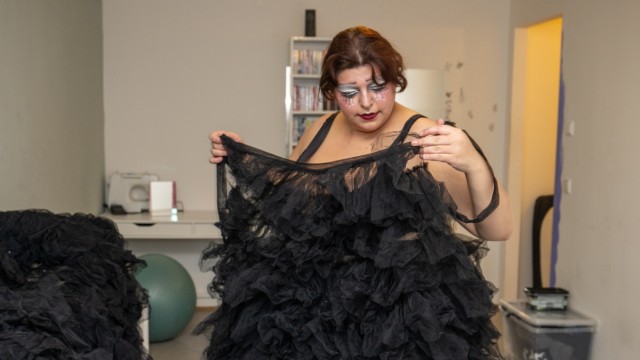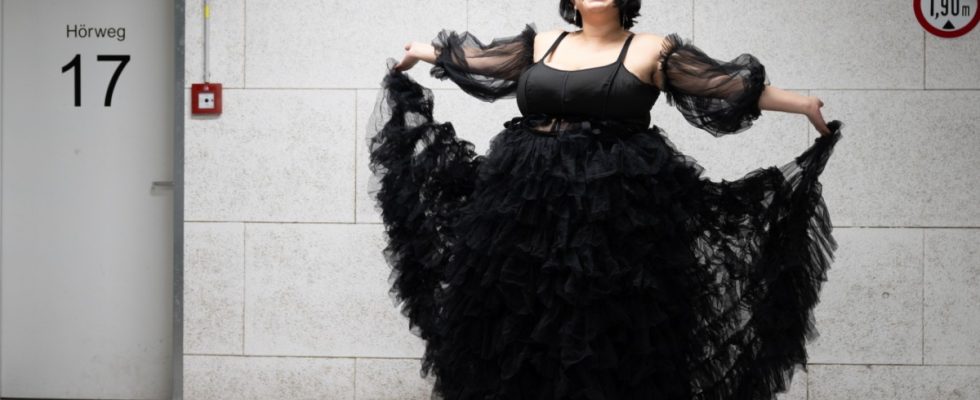Dark music is playing. Glitta Rose’s face is contorted in pain as she moves her lips in a well-rehearsed monologue. The sash-embroidered black dress complements the oppressive mood of her drag performance, which she performed on Lost Weekend a few weeks ago. “Right now, with my drag, I’m focusing on the dark side – I’m showing what I don’t want to show openly to others. It’s therapy,” says Milena Toskova, 24, who calls herself “Glitta Rose” as a drag queen.
Milena wants to break taboos with her art, which for her is above all an act of liberation. “I grew up in a conservative family where I didn’t feel like I was allowed to be myself. Through drag, I allow myself to do exactly that,” says Milena. Before she started doing drag this May, she was active in theater for a long time. But she seems to have suspected that her journey would lead to drag. The name “Glitta Rose” had been floating around in her head for two years. Typically for drag, the name is a pun – when pronounced quickly, it becomes clitoris.

“It was important to me that the name was sexual, but only at second glance. Especially as a woman, it was difficult for me to live my sexual freedom,” says Milena. In her very first drag performance, she fought back this right. For a lip sync battle – a kind of karaoke, only here you don’t sing, but move your lips to the lyrics – she cut three songs together: It started with “Like a Virgin” and ended with “Lets get physical” – The songs were deliberately chosen: “It’s about a woman who likes to have sex and is into it. My drag is always about transformation,” says Milena. Before her performances, she thinks about a concept for her story.

As liberating as it is for her to be on stage, it is also difficult. “I’ve experienced a lot of traumatic things in my life; last year I couldn’t leave my house for a long time,” says Milena. The first time she went to a drag show, she was mesmerized by the magic that was happening on stage. “When I saw how much joy people had in being themselves, I knew: I wanted to be a part of that,” says Milena.

After her first performance she was confronted with a colorful explosion of emotions. “It took a lot of effort for me to go on stage. I struggle with fears about my body. There are hardly any drag artists in Munich who are like me: fat, disabled and people of color,” says Milena. She made it to the finals, but felt ignored by the community afterward. “The drag scene in Munich is dominated by male-read artists – the drag queens. There are few female-read people who do feminine drag.” The fact that drag is primarily a diverse performance art that can be done by any gender is often ignored in Munich.

Although the artist has been on stage frequently in recent weeks, her fears remain a constant companion. By dealing with topics such as self-harm and depression in her performances, she takes back her power over herself. “Everyone wants to be loved, but no one likes to go on stage and say how lonely they are. Even if it still takes a lot of effort for me to go on stage, I prove to myself every time that my fears don’t define me,” says Milena.

